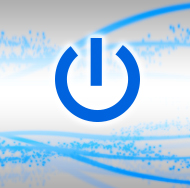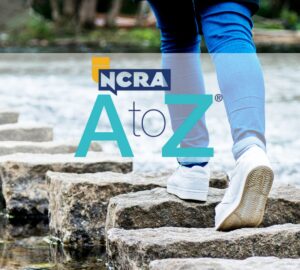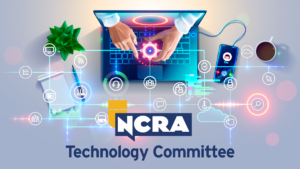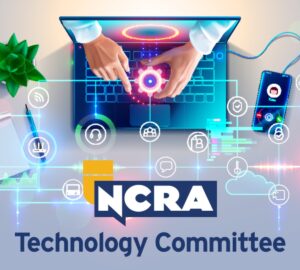 Court reporters are often put into a situation where a witness asks to read and sign a transcript without the lawyer ordering a copy. If reporters feel the need to use printed versions of the transcripts, they can make the transcript available for review at their own office or, if the witness lives far away, at the office of another court reporter or notary. In addition, a number of digital solutions can help reporters protect the transcript from being copied.
Court reporters are often put into a situation where a witness asks to read and sign a transcript without the lawyer ordering a copy. If reporters feel the need to use printed versions of the transcripts, they can make the transcript available for review at their own office or, if the witness lives far away, at the office of another court reporter or notary. In addition, a number of digital solutions can help reporters protect the transcript from being copied.
PDF-it’s read and sign options
By Jim Woitalla
PDF-it allows electronic read and sign. The company offers an online read-only feature that allows the reporter to set an end date, after which the transcript will no longer be available. There’s also an option to offer the reader the opportunity to purchase a certified copy.
While many reporters have gotten used to sending transcripts as pdfs by email, they should keep in mind that anything sent by email can be cracked open. To protect the transcript in an emailed pdf format, reporters can use a watermark or a disclaimer in the footer, which can make it difficult to use for legal purposes. In addition, reporters in this situation can make it harder by sending a code in a separate email.
The PDF-It website is here.
Jim Woitalla, RDR, CRI, is a freelancer in Minnetonka, Minn. He notes that he has not had to use this system often, but he is happy to know it’s available when he needs it.
Thomson Reuters e-Transcript Manager’s read and sign options
By Sunny Hann
RealLegal, by Thomson Reuters, contains security features that allow the user to limit the usage of a transcript. A number of different features can be used to accomplish this. We recommend using feature lockouts along with our built-in errata sheet for read-and-sign. Feature lockouts refer to methods for protecting transcripts against copying, printing, or saving into another format by clients or others. If all lockouts are employed, a person can only view the transcript unless they are given the unlock code stored in the reporter’s software.
Within E-Transcript Manager, the following features can be locked or unlocked when creating an e-transcript:
- Print full size: Select this option to prevent unauthorized printing of full-sized copies of the transcript.
- Print condensed: Select this option to prevent unauthorized printing of a condensed version of the transcript.
- Print word index: Select this option to prevent unauthorized use of the Word Index.
- Save as: Select this option to prevent unauthorized saving of the transcript to another format. For example, you can prevent the saving of the transcript as an ASCII file (a text file).
- Clipboard copy: Select this option to prevent unauthorized copying and pasting of text from the transcript to another application or document — for example, an email or a word processing document.
- Draft copy and show DRAFT COPY watermark: Within the security features, it is possible to select this option to display the words DRAFT COPY on the background of each page as a watermark.
Beyond limiting the use of a completed e-transcript to view-only abilities, you are also able to send an errata sheet that is part of the file but can still be printed, signed, notarized, and returned to you. The errata sheet is incorporated in the themes area of your E-Transcript Manager and is applied to the file when you select your theme. If included, an errata sheet can be printed from under the File/Print/Transcript area of the e-transcript file.
Here are instructions and ideas of how to handle the situation in another way:
- Click the “Transcript theme” drop-down list, and then click the theme you want to apply to the transcript. Themes refer to how you set up a document for printing, the company information you place on a transcript, and the appearance of a transcript: headers, footers, the cover page, and so forth.
- Click the “Edit” button to edit a theme.
- Click the “Security” button.
- Complete the fields as follows:
- Version: final version, draft only, or sealed
- Draft Watermark
- Show DRAFT ONLY watermark when printing: This option works with the draft only option. To print the DRAFT ONLY watermark on the page, click “Draft only” under “Version,” and then select “Show DRAFT ONLY watermark when printing.”
- Feature lockouts
- Encryption
- Password protected: If you want to protect the transcript with a password that people must enter before viewing the transcript, type the password here. You will need to send clients the password.
- Signature
- If you have signed the transcript electronically, click the “View” button to view the electronic signature.
- Click the “Apply” button.
The RealLegal website is here.
Sunny Hann is a customer relationship manager at RealLegal. He can be reached at sunny.hann@thomsonreuters.com.
YesLaw’s read and sign options
By Brian Clune
YesLaw has a read-only function that delivers a file online to the witness that can be read but not printed, saved, or downloaded. The witness can read the transcript from any computer screen. Because the file is online, the security can be controlled much more than sending a file. YesLaw also has a watermark functionality that will mark each page as “Read only.” Because the YesLaw PDF production software comes with an online delivery account in the cloud, it is an easy process to send a read-only transcript.
- You will need the email of the deponent or their attorney.
- Prepare the transcript as usual in the YesLaw Transcript software.
- On the third wizard page, select “full,” “condensed,” or “both” for upload.
- Select the “Publish to” button and enter the email with first and last names.
- Select the view-only check box. Leave the “Publish to” email pull-down box empty to use the generic email.
- Click “+Add” to list the intended recipients and then click “Done.”
- Click “Produce files.”
- You will need to email a separate errata sheet so the errata is not “View only,” and the witness can note the changes then send back the errata.
By using an online view of the transcript, the reporter grants remote access without requiring the witness to come into an office. The online view does not provide the ability to use a third-party software to break the view-only attributes since the file is on YesLaw’s secure server and not accessible to the public. YesLaw’s server, when given the “View only” command, will not allow someone to, download, or print the transcript. Permissions to access the transcript can be granted at any time by the reporter by simply issuing an upgraded profile.
With files that are sent out as attachments, or in a Dropbox-type download, the user has the file locally and can apply any of a various hacking tools to alter the access to the file. The delivery of a transcript online does not allow the recipient to have the file locally if it has been designated a “View only,” and therefore, there is no opportunity to simply hack the file.
The YesLaw website is here.
Brian Clune, CLVS, is vice president of YesLaw. He can be reached at bclune@yesvideo.com.







